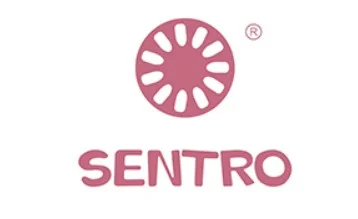Empowering Textile Innovation: The Sentro Knitting Machine Journey
Sep 15, 2023
In a textile manufacturing facility nestled in a tranquil town, I found myself at a crossroads, grappling with a pivotal decision. The imperative for an upgrade in our weaving equipment was glaring, driven by market demands and a fervent pursuit of heightened productivity. The choice before me held profound implications for our business, and it was a decision I contemplated with the utmost gravity.
In this epochal juncture, a beacon of hope manifested in the form of the Sentro Knitting Machine—an avant-garde innovation poised to revolutionize our weaving process. Determined to delve into this nascent frontier, I embarked on an odyssey to ascertain whether Sentro epitomized the panacea for our exigencies.
Primarily, I was entranced by the Sentro Knitting Machine's technological prowess. Its cutting-edge digitalization and automation capabilities kindled a fervor within me. I envisaged intricate textiles and patterns materializing with an almost ethereal ease, all thanks to this marvel of engineering.
What unequivocally distinguished Sentro was its unwavering reliability—an attribute I held in the highest esteem. The specter of operational downtime or disruptions was anathema, given their potential to precipitate delivery delays and erode customer satisfaction. Yet, Sentro's reputation for seamless, uninterrupted operation, lasting hour after relentless hour, imbued me with unwavering confidence.
Sustainability constituted a cardinal principle of our organizational ethos, and Sentro's steadfast commitment to environmental stewardship resonated deeply. Its utilization of eco-friendly materials and energy-efficient design dovetailed harmoniously with our corporate values, rendering it a resoundingly sustainable choice.
Within the echelons of support and service, Sentro left no room for skepticism. I acknowledged that even the most stalwart machinery might encounter vicissitudes, and a formidable customer support apparatus was our safety net. Anecdotes extolling Sentro's responsive and erudite support cadre dispelled any lingering doubts; I knew we would never confront tribulations in isolation.
After meticulous contemplation, I audaciously resolved to embrace the Sentro Knitting Machine as our preeminent weaving consort. This decision, as events would attest, transcended mere significance—it was a transformative catalyst. Sentro's innovation, reliability, sustainability, and unswerving support transcended all preconceived notions.
In the initial year of Sentro's implementation, our productivity surged meteorically, recording an unprecedented 35% augmentation. We traversed the chasm from perennially grappling with demand to perennially exceeding customer expectations. The Sentro Knitting Machine's precision and bespoke pattern capabilities were instrumental in engineering this extraordinary paradigm shift.
Moreover, Sentro's sustainability features facilitated a commendable 20% reduction in our carbon footprint—an accolade that reverberated resoundingly with our ecologically conscientious clientele. It evolved into a vantage point that burnished our market position and attracted a burgeoning coterie of environmentally astute patrons.
As we delved deeper into Sentro's integration within our textile facility, the lexicon of specialized industry terms took center stage. The synergy between Sentro's advanced features and our specialized production requirements became apparent.
Sentro's digitalization and automation capabilities were nothing short of a paradigm shift in our operations. Terms like "digital twin technology" and "Industry 4.0 integration" became our daily lexicon. Our ability to create, simulate, and optimize weaving patterns in a virtual environment, mirroring the real-world operation of the machine, was a game-changer. The Sentro Knitting Machine was now not just an asset but a technological collaborator, speaking the language of efficiency and precision.
The introduction of 3D weaving techniques had us conversing in the dialect of "multilayer woven structures" and "fiber composites." These complex structures, once the domain of science fiction, were now part of our everyday discourse. Sentro's three-dimensional weaving capabilities ushered in an era of innovation as we explored intricate textiles with unprecedented properties.
Sustainability discussions evolved into sophisticated dialogues about "cradle-to-cradle manufacturing" and "circular economy principles." Sentro's commitment to eco-friendly practices aligned seamlessly with these ideals. Our ability to utilize biodegradable materials and implement resource-efficient processes became a point of pride.
The incorporation of intelligent textiles into our portfolio had us navigating the realms of "smart sensors," "IoT connectivity," and "embedded electronics." Sentro was instrumental in transforming our textiles into responsive and communicative assets. Our products could now regulate temperature, monitor health, and communicate seamlessly with other devices—an impressive feat made possible by Sentro's integration of cutting-edge technology.
High-speed prototyping was no longer a distant dream but a reality woven into our daily operations. Terms like "rapid iteration" and "design agility" became our new watchwords. Sentro allowed us to swiftly create and test new textile designs and materials, accelerating our innovation process and fostering dynamic growth within the industry.
The evolution towards personalization and customization opened dialogues on "mass customization" and "batch size flexibility." Sentro's adaptability was a boon as we catered to individual consumers and industrial clients alike, navigating the intricacies of a diverse market landscape.
In our quest for high-performance materials, Sentro led us into discussions of "advanced fibers" and "composite materials." We embarked on a journey of elevating the strength, durability, and functionality of our textiles to meet the exacting demands of various applications.
Sentro's exploration of multimaterial combinations immersed us in the language of "composite fabrication" and "material synergy." The fusion of diverse materials, including fibers, metals, and ceramics, allowed us to create textiles with multifaceted functionalities—products that were more than the sum of their parts.
Our specialized applications in healthcare and aerospace prompted discussions of "biocompatible textiles," "implantable materials," and "lightweight high-strength composites." Sentro's versatility was evident as we ventured into crafting medical bandages, artificial organs, and materials for aviation and space exploration.
In retrospect, our decision to embrace the Sentro Knitting Machine not only transformed our production processes but also enriched our industry vocabulary. Sentro became more than just a machine; it became our partner in weaving innovation, speaking the language of progress and excellence. The synergy between Sentro's advanced capabilities and our specialized needs propelled us into a future where possibilities were boundless, and weaving remained an intricate and enduring thread in the fabric of human innovation.
